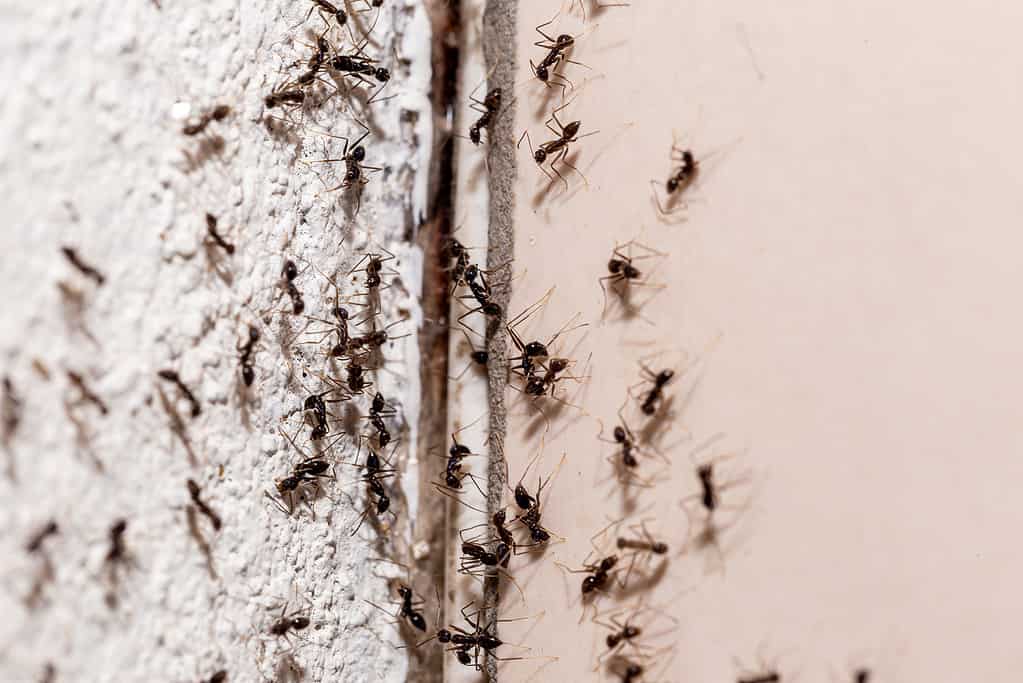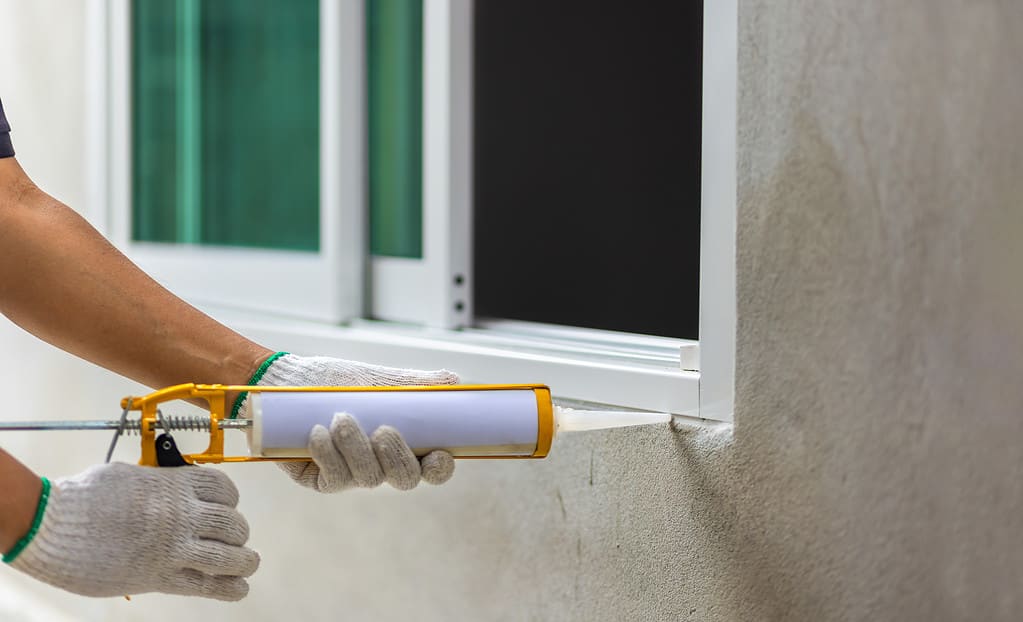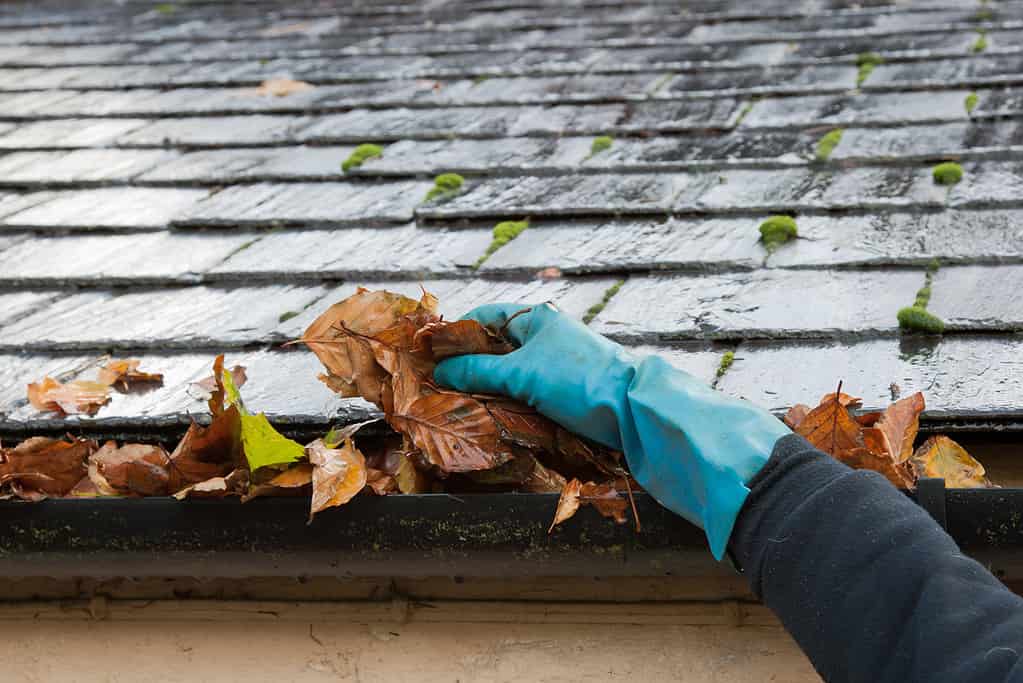Insects play an essential role in our ecosystem. However, when they invade our living spaces, it can be a nuisance or even damaging to our health or property. People often use chemical pesticides to combat these intruders. However, they can have harmful effects on the environment, human health, and animal health. This article will explore natural and eco-friendly DIY solutions to eliminate insects from in and around your home, as well as other solutions to ensure your home can stay free of pesky bugs.
These methods are not only effective but also gentle on the environment, allowing us to coexist harmoniously with the natural world. It’s also pertinent to know that when utilizing natural methods, you should utilize three or more at the same time to achieve the most effective results. Moreover, regular application of certain methods may also result in the most effective results.
Now, let’s explore various DIY recipes, products, and home improvements you can do to help eliminate insects from your home.
27 DIY Solutions to Eliminate Insects From Your Home

There are many environmentally friendly DIY solutions for eliminating insects from your home.
©iStock.com/RHJ
1. Lemon Eucalyptus Oil Repellent
First on our list of DIY solutions to eliminate insects from your home is a lemon eucalyptus oil repellent. Lemon eucalyptus oil is an essential oil that can be used as a natural insect repellent. It is derived from the leaves of the lemon eucalyptus tree. This solution is effective against mosquitoes, ticks, and other flying insects.
To make a reusable sprayable repellent for your home, mix ten or more drops of lemon eucalyptus oil with 1/4 cup of water in a spray bottle. Spray it in doorways, windows, and outdoor sitting areas to keep insects at bay. You can even spray it on yourself in place of commercial bug spray. If you utilize it as a bug spray, adding ten or more drops of carrier oil, such as neem oil or almond oil, will help the smell to stick around longer and require fewer applications.
2. Vinegar Fruit Fly Trap
This is a simple trap using apple cider vinegar to lure and trap pesky fruit flies. This solution is highly effective because the fruit flies and gnats are attracted to the vinegar and get trapped in the soapy solution.
To make this fruit fly trap, fill a small bowl or jar with ¼ to 1 cup of apple cider vinegar and add a few drops of dish soap. You can cover the bowl or jar with plastic wrap and poke small holes in it, or omit this step. Place the trap near fruit bowls, compost bins, or wherever fruit flies and gnats congregate.
3. Diatomaceous Earth

A unique method for repelling insects is using diatomaceous earth.
©FotoHelin/Shutterstock.com
Diatomaceous earth is a natural powder. It is made from sedimentary rock that consists of fossilized remains of diatoms. This powder is most effective against ants, cockroaches, fleas, bed bugs, crickets, ticks, spiders, and many more insects.
To utilize diatomaceous earth, sprinkle a thin layer in areas where insects crawl, such as behind appliances or along baseboards. The diatomaceous earth is effective at repelling insects due to its microscopic sharp edges damaging the exoskeleton of insects, absorbing the oils and fats from the insect’s exoskeleton, which ultimately dehydrates and kills them.
4. Neem Oil Spray
Neem oil is a natural extract from the seed kernels of the neem tree, known for its insect-repelling properties. This method is most effective against aphids, mealybugs, other garden pests, scale insects, leafhoppers, psyllids, whiteflies, and other homopterous pests.
To make a neem oil spray, mix two tablespoons or more of neem oil with 1 quart of warm water and a few drops of liquid soap. You can omit the liquid soap. Moreover, if desired, you can add ten drops or more of any essential oils targeted at specific insects. Spray the mixture on or around plants to deter insect infestations.
5. Homemade Ant Bait
This is a mixture of borax and sugar to create a natural ant bait. It’s an effective solution for common household ants in particular, but it also works on cockroaches as well. These insects are attracted to the sugar and consume the borax, which is toxic to them. This makes this solution highly effective at eliminating insects from your home.
Making this solution is simple. Mix equal 1 part borax and three parts sugar and mix with water. A specific recipe could be one tablespoon of borax, ¼ cup of sugar, and 1 cup of water. Place small amounts of the mixture on a plate or other open container in areas where ants are active. You can even soak cotton balls in the mixture and leave them where ants or cockroaches are active.
6. Mint and Rosemary Repellent Spray

Mint and rosemary, whether fresh or as essential oils, can be effective at repelling insects.
©Madeleine Steinbach/Shutterstock.com
This is another spray utilizing essential oil or fresh herbs. Traditionally, it is a natural repellent spray made from fresh or dried mint and rosemary leaves. This spray is effective at repelling ants, mosquitoes, flies, slugs, beetles, and more.
To make this spray, boil a quart of water, add a handful of mint and rosemary leaves, and let it steep for several hours. Strain the liquid and pour it into a spray bottle. You can also mix ten or more drops of the essential oil versions with 1 cup of water and pour it into a spray bottle. Use this spray around entry points to your home and in outdoor seating areas.
7. Homemade Flypaper
This consists of a sticky flypaper made from simple household items. As it sounds, flypaper is best used for trapping flies and other flying insects.
To create a homemade flypaper, you can mix equal parts sugar, honey or corn syrup, and water to create a sticky solution. Cut strips of brown paper or cardboard, coat them with the solution, and hang them where flies are a problem, such as near windows, in the kitchen, workshops, or barns.
8. Lavender Sachets
This can be a small sachet filled with dried lavender flowers. Lavender is effective in keeping moths and fleas away from your clothes and linens. The scent of lavender also repels black beetles and mosquitoes.
To utilize this method, fill small cloth bags or cloth tea bags with dried lavender flowers or sew your sachets. Then, place sachets in drawers, closets, or under pillows. You can even leave them around the house, under furniture or in cabinets.
9. Cayenne Pepper Barrier

Cayenne pepper can be used to repel many insects, including ants, slugs, snails, and more.
©Thanatip S./Shutterstock.com
People have used cayenne pepper as a natural deterrent for a long time. Its powerful aroma and properties repel many insects, including ants, slugs, snails, beetles, leafhoppers, spittlebugs, and much more.
A cayenne pepper barrier is relatively easy to make. You can sprinkle a line of cayenne pepper in areas where you want to prevent ants and other crawling insects from entering, whether in your home, around your home, or in the garden. You can apply it along windowsills, doorways, and garden beds.
10. Homemade Mosquito Trap
A DIY mosquito trap can be quite straightforward. All you need is a plastic bottle and a sugary solution. This trap works because mosquitoes are drawn into the trap and cannot escape.
Cut a plastic bottle in half, invert the top half into the bottom half, and tape them together. Fill the bottom half with a mixture of sugar, water, and yeast. Mosquitoes are attracted to the carbon dioxide produced by the yeast. Place the trap in areas where mosquitoes are a nuisance.
11. Molasses and Dish Soap Trap for Aphids and Caterpillars
This solution is a sticky trap for aphids or caterpillars made from molasses and dish soap. Aphids and caterpillars are attracted to the molasses but get stuck in the soapy solution.
To make this, mix one tablespoon of molasses with 1 quart of water and a few drops of dish soap. Spray it on plants infested with these pesky bugs and apply regularly.
12. Citrus Peel Repellent

Many bugs are repelled by citrus.
©PosiNote/Shutterstock.com
Many bugs are repelled by citrus. This solution is a homemade repellent made from citrus peels. This method is effective against ants, gnats, mosquitoes, ticks, spiders, slugs, aphids, whiteflies, fruit flies, and other crawling insects.
To make this, place citrus peels, such as orange or lemon, near entry points to deter ants and spiders. Scatter citrus peels around windows, doors, and garden beds. You can also boil citrus peels in water for 15 to 20 minutes, let them cool, and strain them into a spray bottle. You can use this spray solution in similar areas.
13. Essential Oil Spray
This is probably the most talked about DIY natural solution. You can make this all-natural bug spray using essential oils, water, and sometimes a carrier oil like neem oil. This method can repel specific insects depending on what essential oils you choose. It is commonly used to repel mosquitoes, ticks, and other flying insects.
To make an essential oil spray, mix essential oils like citronella, lavender, mint, cedar, and eucalyptus with water and a bit of witch hazel or neem oil. Store in a spray bottle and apply frequently. This spray can be used on your body, around doors and windows, on baseboards, in the garden, and more.
14. Coffee Grounds Garden Barrier
Coffee grounds spread around your garden can be effective at repelling certain insects. It can be effective against slugs, snails, wasps, and mosquitoes when used properly.
Sprinkle coffee grounds around plants to deter insects. Make sure you’re applying a solid layer around your plants. You can also burn the coffee grounds, wafting the smoke and scent around the garden or home. The targeted insects don’t like the texture, smell, and acidity. Moreover, coffee grounds are toxic to many insects.
15. Homemade Earwig Trap

Vegetable oil can be used to catch earwigs in your home.
©Naypong Studio/Shutterstock.com
This can be a straightforward trap to catch earwigs using an empty can or container and oil. As it’s labeled, this trap is targeted against earwigs.
Place a small amount of cheap vegetable oil, such as 1 cup, in the bottom of an open can or container. You can also add ¼ cup of soy sauce, but this ingredient is optional. Leave it overnight in areas where earwigs are active. Check the trap in the morning and dispose of captured earwigs.
16. Bay Leaves for Stored Food Pest Control
For this method, you can use fresh or dried bay leaves as a natural pest repellent for stored food. They are most effective at preventing infestations of pantry moths, weevils, mice, flies, moths, earwigs, and roaches.
To utilize this method, place bay leaves in pantries, cabinets, and around containers of grains, flour, or pasta to deter pantry pests.
17. Citronella Candles
These candles are infused with citronella oil, a natural and powerful insect repellent. Citronella candles are incredibly effective at deterring mosquitoes and other flying insects. They can be purchased at any major retailer, such as Home Depot, or homemade.
To use this solution, place citronella candles on outdoor tables or near seating areas. Light them to create a protective barrier against mosquitoes. Note that they are only effective when lit and for a short duration afterward. The citronella scent masks the odor of humans, making it harder for mosquitoes to locate potential hosts. Moreover, mosquitoes hate the scent and thus avoid it at all costs.
18. Sealing Cracks and Gaps in Your Home

Replacing old caulking that is compromised can help eliminate insects from your home.
©Toa55/iStock via Getty Images
The process of identifying and sealing cracks, gaps, and holes in your home’s exterior and interior can be a highly effective DIY solution for eliminating insects from your home. However, it can be time-consuming and labor-intensive, depending on the state of your home. Nonetheless, sealing cracks and small openings helps prevent entry for a wide range of pests, including ants, cockroaches, and spiders, to name a few.
You can use caulk or weatherstripping to seal gaps around windows, doors, and foundations. Moreover, inspecting and repairing damaged siding or roofing can be incredibly beneficial. As simple as it is, closing off potential entry points makes it difficult for insects to find their way inside.
19. Repairing or Replacing Window Screens
Ensuring that window screens are intact and without holes or tears can be another measure to take against pesky bugs. Well-maintained window screens keep out mosquitoes, flies, and other flying insects.
To repel flying insects through home improvement measures, inspect window screens regularly and repair or replace damaged ones. As window screens act as a physical barrier, they prevent insects from entering your home while still allowing fresh air to circulate.
20. Redoing Caulking Around Doors and Windows
Removing and replacing old or deteriorated caulking around doors and windows can also help repel insects. Properly sealed gaps discourage ants, termites, and other pests from entering your home. Furthermore, it also helps prevent moisture from entering your home. Moisture can be an aiding factor in specific insect infestations.
An effective measure to help older homes is to scrape away old caulking, clean the area, and apply new, high-quality caulk to seal gaps and joints. The new caulking creates a barrier that insects cannot easily breach.
21. Installing Door Sweeps

Well-fit door sweeps are a small but mighty measure when eliminating insects from your home.
©Heidi Patricola/iStock via Getty Images
This device is attached to the bottom of exterior doors to seal the gap between the door and the floor. As they sound, door sweeps help keep out crawling insects like ants, roaches, spiders, and other crawling critters.
When replacing or installing a door sweep, choose a suitable door sweep and attach it to the door according to the manufacturer’s instructions. This will create a tight seal at the base of the door and block potential entry points.
22. Properly Storing Food
This may seem obvious, but securely storing food prevents pests from being attracted to it and can help eliminate insects from your home. Proper food storage discourages pantry pests, such as beetles, moths, ants, weevils, cockroaches, mice, and many more.
Use airtight containers for pantry staples, clean up spills promptly, and store fruits and vegetables away from sunlit places. Also, ensure that fruits or vegetables outside the refrigerator have ample airflow. Moreover, dispose of any fruits that may be overripe or compromised. Lastly, even though the door is closed, refrigerators must be well maintained with regular cleanings. All food items in refrigerators should be well-contained, and spills should be cleaned promptly. Preventing access to food sources makes your home less attractive to pests.
23. Maintaining a Clean Yard
Regular yard maintenance helps to reduce insect breeding sites and harborage areas. A well-maintained yard discourages mosquitoes, ticks, fleas, and other outdoor pests.
To keep and maintain a clean yard, trim overgrown vegetation, remove debris, remove decaying matter, organize and keep clean any man-made items, and keep gutters clean to prevent standing water. Eliminating breeding sites and hiding places that can result from overgrown or messy yards reduces the insect population around your home.
24. Replacing Outdoor Lighting with Yellow Bulbs

Yellow bug lights can be effective at reducing flying insect populations.
©Nikolaeva Elena/iStock via Getty Images
While this method won’t eliminate certain insects, it will help reduce them congregating around your home. Swapping white outdoor bulbs for yellow bug lights is effective as yellow bug lights attract fewer flying insects, such as moths and mosquitoes.
To achieve this effect, you can replace outdoor bulbs with yellow or sodium vapor lights. These lights work by emitting a wavelength that is less attractive to insects.
25. Regularly Cleaning Trash Bins
Another obvious but essential measure is regularly cleaning and maintaining your trash bins to prevent insect infestations. Properly cleaned trash bins discourage flies and other scavenging insects.
Though undesirable, this upkeep is an important measure. Rinse and disinfect trash bins regularly. You can even use liners for added protection. Clean bins reduce the odors and environments that attract pests.
26. Eliminating Standing Water
Removing stagnant water sources on your property can significantly improve undesired insect populations. This is because eliminating standing water prevents ideal breeding grounds for insects like mosquitoes.
To remove standing water from in or around your home, empty containers, fix leaky faucets, and address drainage issues to prevent standing water. Mosquitoes and other insects lay their eggs in standing water, so removing these breeding sites reduces their population or occurrence in the general area.
27. Regularly Cleaning Gutters

Dirty gutters can harbor insect populations.
©rekemp/iStock via Getty Images
Cleaning out leaves and debris from gutters and downspouts can also be helpful when working to remove or prevent insect infestations. Clean gutters prevent moisture buildup and discourage pests like mosquitoes and termites by eliminating their ideal environments. It also helps prevent any standing water.
To upkeep your gutters, regularly remove debris from them and ensure downspouts are clear. Proper drainage reduces breeding sites and eliminates conditions that attract many pests.
As a reminder, insects are a vital part of our ecosystem, and we should strive to coexist with them sustainably. However, there is a fine line between coexistence and infestation. These natural and eco-friendly DIY solutions offer effective ways to prevent or remove insects from in and around your home without resorting to harmful chemicals. By adopting these natural methods, you can live in harmony with the Earth while maintaining a pest-free living environment.
Conclusion
To maintain a harmonious home environment while respecting the natural world, embracing natural and eco-friendly DIY solutions for insect control is a sustainable choice. These methods not only provide effective protection against pests when multiple methods are used together and applied regularly but also reduce the reliance on harmful chemicals that can harm us and the environment.
From the simple yet potent dish soap spray to the utilization of diatomaceous earth, borax, essential oils, and much more, a vast array of natural options exist to repel all types of insects. Add home improvement measures such as sealing cracks, repairing screens, and maintaining cleanliness, and these natural approaches create a formidable defense against eliminating insects from your home. By incorporating these methods into our daily lives, we can embrace a more sustainable and environmentally friendly way of living.
The photo featured at the top of this post is © botamochi/iStock via Getty Images
Thank you for reading! Have some feedback for us? Contact the AZ Animals editorial team.







